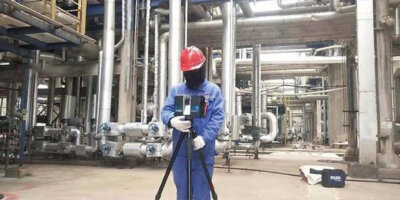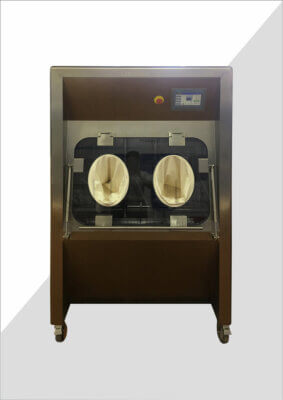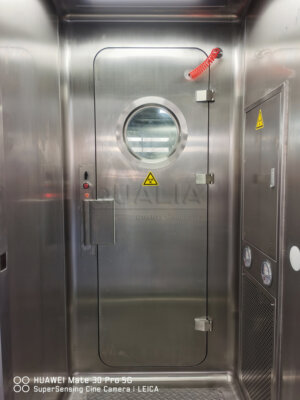The critical role of Effluent Decontamination Systems (EDS) in maintaining the sterility and safety of cleanroom facilities cannot be overstated. As biopharmaceutical and semiconductor industries continue to advance, the need for precise sizing and capacity planning of EDS becomes increasingly paramount. This article delves into the intricacies of EDS design, exploring how proper sizing and capacity planning can significantly enhance cleanroom performance and ensure regulatory compliance.
Designing an effective EDS for cleanroom facilities requires a multifaceted approach, considering factors such as waste volume, contamination levels, and regulatory requirements. By optimizing EDS sizing and capacity, facilities can achieve improved operational efficiency, reduced environmental impact, and enhanced safety for personnel. This comprehensive guide will explore the key considerations, best practices, and innovative technologies shaping the future of EDS in cleanroom environments.
As we navigate through the complexities of EDS sizing and capacity planning, it's essential to recognize the interconnected nature of cleanroom systems. From air handling units to waste management processes, each component plays a vital role in maintaining the integrity of the controlled environment. By focusing on EDS optimization, we can unlock new levels of performance and sustainability in cleanroom operations.
Proper sizing and capacity planning of Effluent Decontamination Systems are crucial for maintaining the sterility, safety, and efficiency of cleanroom facilities in biopharmaceutical and semiconductor industries.
Before diving into the specifics of EDS sizing and capacity planning, let's take a look at a comparison of different EDS technologies commonly used in cleanroom facilities:
| EDS Technology | Treatment Capacity | Energy Efficiency | Initial Cost | Maintenance Requirements |
|---|---|---|---|---|
| Chemical Treatment | High | Moderate | Low | Moderate |
| Thermal Treatment | Very High | Low | High | Low |
| Membrane Filtration | Moderate | High | Moderate | High |
| UV Disinfection | Low | Very High | Low | Low |
| Ozonation | High | Moderate | Moderate | Moderate |
What factors influence EDS sizing in cleanroom facilities?
When it comes to sizing an Effluent Decontamination System for a cleanroom facility, several critical factors come into play. The volume and nature of waste generated, the level of contamination, and the specific regulatory requirements all contribute to determining the appropriate size of the EDS.
Key considerations for EDS sizing include the facility's operational hours, peak waste generation periods, and the types of contaminants present in the effluent. Additionally, future expansion plans and potential changes in production processes should be taken into account to ensure the EDS can accommodate increased capacity needs.
Proper sizing of an EDS is crucial for maintaining the cleanliness and safety standards of a cleanroom environment. An undersized system may lead to inadequate treatment of effluents, potentially compromising the sterility of the facility. Conversely, an oversized system can result in unnecessary energy consumption and increased operational costs.
Accurate assessment of waste volume, contamination levels, and regulatory requirements is essential for determining the optimal size of an Effluent Decontamination System in cleanroom facilities.
| Waste Type | Average Daily Volume (L) | Peak Flow Rate (L/min) | Required Treatment Level |
|---|---|---|---|
| Biological | 500 | 20 | High |
| Chemical | 300 | 15 | Moderate |
| Mixed | 200 | 10 | Very High |
How does capacity planning impact EDS performance in cleanrooms?
Capacity planning plays a pivotal role in ensuring the optimal performance of Effluent Decontamination Systems in cleanroom environments. By accurately projecting future needs and potential fluctuations in waste generation, facilities can design EDS solutions that are both efficient and scalable.
Effective capacity planning involves analyzing historical data, forecasting future production trends, and considering potential regulatory changes that may impact effluent treatment requirements. This proactive approach allows cleanroom operators to implement EDS solutions that can adapt to changing needs without compromising performance or compliance.
One of the key benefits of thorough capacity planning is the ability to optimize resource allocation. By understanding the long-term requirements of the EDS, facilities can invest in technologies and infrastructure that provide the best balance between initial costs and operational efficiency over time.
Strategic capacity planning enables cleanroom facilities to implement adaptable EDS solutions that can efficiently handle current and future effluent treatment needs while optimizing resource utilization.
| Planning Horizon | Capacity Increase (%) | Technology Upgrade Required | Estimated Cost Impact |
|---|---|---|---|
| Short-term (1-2 years) | 10-20% | Minor | Low |
| Medium-term (3-5 years) | 30-50% | Moderate | Medium |
| Long-term (5-10 years) | 50-100% | Major | High |
What role do regulatory requirements play in EDS sizing and capacity planning?
Regulatory requirements serve as a cornerstone in the sizing and capacity planning of Effluent Decontamination Systems for cleanroom facilities. Compliance with standards set by organizations such as the FDA, EPA, and ISO is not just a legal obligation but a fundamental aspect of ensuring the safety and efficacy of cleanroom operations.
These regulations often dictate specific treatment levels for different types of effluents, influencing the choice of EDS technologies and the required capacity. For instance, facilities handling high-risk biological agents may need to implement more robust decontamination processes, necessitating larger or more advanced EDS solutions.
Furthermore, regulatory requirements can evolve over time, potentially impacting the long-term capacity needs of an EDS. Staying abreast of regulatory trends and anticipating future changes is crucial for implementing EDS solutions that remain compliant and effective in the long run.
Adherence to regulatory standards is paramount in EDS sizing and capacity planning, ensuring that cleanroom facilities maintain compliance while effectively managing effluents and protecting environmental and public health.
| Regulatory Body | Applicable Standard | Key Requirements | Impact on EDS Sizing |
|---|---|---|---|
| FDA | 21 CFR Part 211 | Sterility assurance | High |
| EPA | Clean Water Act | Effluent quality limits | Moderate |
| ISO | ISO 14644 | Airborne particulate cleanliness | Low |
How can innovative technologies enhance EDS efficiency in cleanrooms?
The landscape of Effluent Decontamination Systems is continuously evolving, with innovative technologies offering new possibilities for enhancing efficiency and performance in cleanroom environments. These advancements are reshaping the approach to EDS sizing and capacity planning, providing solutions that are more compact, energy-efficient, and adaptable to changing needs.
One of the most promising developments in EDS technology is the integration of smart sensors and IoT (Internet of Things) capabilities. These features allow for real-time monitoring of effluent quality and system performance, enabling more precise control and optimization of the decontamination process. This level of insight can lead to more accurate sizing and capacity planning, as facilities can better understand their actual usage patterns and treatment requirements.
Another area of innovation is in the development of advanced membrane technologies and novel chemical treatments. These solutions offer higher treatment efficiencies in smaller footprints, potentially reducing the overall size requirements for EDS installations while maintaining or even improving performance.
The adoption of innovative technologies in EDS design, such as IoT-enabled monitoring and advanced treatment methods, can significantly enhance efficiency and allow for more precise sizing and capacity planning in cleanroom facilities.
| Technology | Efficiency Improvement | Space Saving | Implementation Complexity |
|---|---|---|---|
| IoT Sensors | 20-30% | Minimal | Moderate |
| Advanced Membranes | 30-40% | 20-30% | High |
| Novel Chemical Treatments | 25-35% | 10-20% | Low to Moderate |
What are the best practices for integrating EDS with other cleanroom systems?
Integrating Effluent Decontamination Systems with other cleanroom systems is crucial for achieving optimal performance and efficiency. A holistic approach to cleanroom design considers the interdependencies between various components, including HVAC, water purification, and waste management systems.
One of the key considerations in EDS integration is ensuring compatibility with the facility's overall automation and control systems. This integration allows for more streamlined operations, better data collection, and improved responsiveness to changes in effluent characteristics or treatment requirements.
Additionally, the physical layout and placement of the EDS within the cleanroom facility play a significant role in its effectiveness. Proper integration considers factors such as piping routes, accessibility for maintenance, and potential impacts on airflow patterns within the controlled environment.
Successful integration of EDS with other cleanroom systems requires careful planning, considering factors such as automation compatibility, physical layout, and potential interactions with air handling and water purification processes.
| Integration Aspect | Impact on EDS Performance | Complexity | Potential Benefits |
|---|---|---|---|
| Automation Integration | High | Moderate | Improved control and efficiency |
| Physical Layout Optimization | Moderate | High | Enhanced maintenance access and reduced contamination risks |
| HVAC System Coordination | Moderate | Low | Better airflow management and reduced cross-contamination |
How does EDS sizing impact energy efficiency and sustainability in cleanrooms?
The sizing of Effluent Decontamination Systems has a direct impact on the energy efficiency and sustainability of cleanroom operations. Properly sized EDS solutions not only ensure effective treatment of effluents but also contribute to optimizing energy consumption and reducing the overall environmental footprint of the facility.
Oversized EDS installations can lead to unnecessary energy expenditure, as larger systems typically require more power to operate, even when running below capacity. Conversely, undersized systems may struggle to meet treatment requirements, potentially leading to increased chemical usage or the need for additional treatment steps, both of which can negatively impact sustainability.
Implementing energy-efficient technologies and right-sizing EDS solutions based on accurate capacity planning can result in significant energy savings over the life of the system. This approach aligns with the growing emphasis on sustainability in cleanroom design and operation, supporting facilities in meeting both environmental goals and regulatory requirements.
Optimal sizing of EDS installations is crucial for maximizing energy efficiency and promoting sustainability in cleanroom facilities, balancing effective effluent treatment with minimized environmental impact.
| EDS Size | Energy Consumption | Treatment Effectiveness | Sustainability Impact |
|---|---|---|---|
| Undersized | Low | Poor | Negative |
| Optimal | Moderate | High | Positive |
| Oversized | High | High | Negative |
What future trends will shape EDS sizing and capacity planning for cleanrooms?
The future of EDS sizing and capacity planning for cleanroom facilities is likely to be shaped by several emerging trends and technological advancements. As industries continue to evolve, so too will the requirements and capabilities of Effluent Decontamination Systems.
One significant trend is the move towards more flexible and modular EDS designs. These systems allow for easier scalability and adaptation to changing needs, potentially simplifying the capacity planning process. Modular designs also offer the advantage of reduced downtime during upgrades or expansions, a critical factor in maintaining cleanroom operations.
Another important development is the increasing use of artificial intelligence and machine learning in EDS management. These technologies can analyze vast amounts of operational data to predict treatment needs, optimize system performance, and even suggest preemptive maintenance, leading to more accurate sizing and capacity planning.
The future of EDS sizing and capacity planning will likely be characterized by increased flexibility, modularity, and the integration of AI-driven predictive analytics, enabling more adaptive and efficient cleanroom effluent management solutions.
| Future Trend | Potential Impact | Adoption Timeline | Readiness of Current Technology |
|---|---|---|---|
| Modular EDS Designs | High | 2-5 years | Moderate |
| AI-driven Optimization | Very High | 5-10 years | Low to Moderate |
| Advanced Material Science | Moderate | 3-7 years | Low |
In conclusion, the sizing and capacity planning of Effluent Decontamination Systems play a crucial role in maintaining the efficiency, safety, and compliance of cleanroom facilities. By carefully considering factors such as waste volume, regulatory requirements, and future growth projections, cleanroom operators can implement EDS solutions that not only meet current needs but also adapt to future challenges.
The integration of innovative technologies, such as IoT-enabled monitoring and advanced treatment methods, offers new possibilities for enhancing EDS performance and efficiency. Moreover, the trend towards modular designs and AI-driven optimization promises to revolutionize the approach to EDS sizing and capacity planning in the coming years.
As the demands on cleanroom facilities continue to evolve, so too must the strategies for managing effluents. By staying informed about emerging trends and best practices in EDS design and implementation, facility managers and engineers can ensure their cleanrooms remain at the forefront of efficiency, sustainability, and regulatory compliance.
For those seeking cutting-edge solutions in effluent decontamination for cleanroom facilities, 'QUALIA's Effluent Decontamination System (EDS) for BSL-2, 3, and 4 Liquid Waste' offers state-of-the-art technology designed to meet the most stringent requirements of modern cleanroom operations.
External Resources
Cleanroom Design: Environmental Monitoring Systems – This article discusses the importance of environmental monitoring systems in cleanroom design, which is crucial for maintaining proper conditions and ensuring the effectiveness of EDS.
Cleanroom Energy Optimization – Provides insights into energy optimization strategies for cleanrooms, including considerations for EDS sizing and capacity planning to improve overall efficiency.
Biosafety Level 3 (BSL-3) Laboratory Design – Offers information on the design requirements for BSL-3 laboratories, including considerations for effluent decontamination systems in high-containment environments.
Cleanroom Standards & Guidelines – Provides an overview of cleanroom standards and guidelines, which are essential for understanding the regulatory context of EDS sizing and capacity planning.
Wastewater Treatment in the Pharmaceutical Industry – Discusses wastewater treatment challenges specific to the pharmaceutical industry, offering insights relevant to EDS design for cleanroom facilities in this sector.
Best Practices for Cleanroom Operations – While not specifically about EDS, this resource provides valuable context on overall cleanroom operations, which informs EDS sizing and capacity planning decisions.
Related Contents:
- Energy Efficiency in EDS: Optimizing Design and Operation
- Thermal Effluent Decontamination: Protecting Our Environment
- Integrating EDS in Cleanroom Facilities: Design Essentials
- Continuous Effluent Decontamination: Protecting Our Environment
- Streamlining Effluent Decontamination: Continuous vs. Batch Processing
- Modernizing Wastewater Treatment: Integrating EDS Systems
- Effluent Decontamination Systems for Biosafety Laboratories
- Navigating Regulatory Waters: Effluent Treatment in Biopharma
- Effluent Decontamination: Essential for High-Risk Labs






























